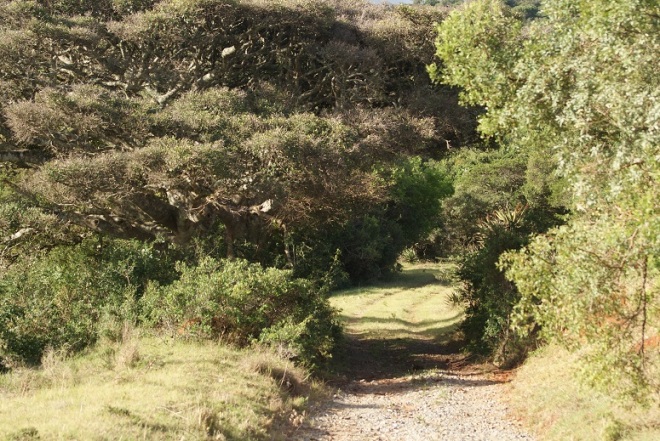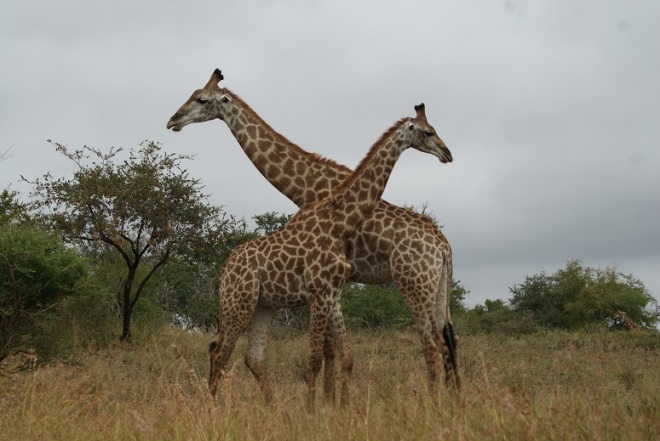game reserve
MOTHER-IN-LAW’S TONGUE
Odd isn’t it … there are so many objections to various perceptions of relationships and gender in today’s society, yet no-one has given a thought to the much maligned – butt of many jokes – general name for the Sanseviera plants: mother-in-law’s tongue!
Let us leave that to the activists and focus on these tough plants that are true survivors of the drought. I think the plants in my garden are Sansevieria hyacinthoides as they look very similar to the plants I have seen growing in the shade of trees in the Addo Elephant National Park, and which are common all over the eastern part of South Africa.
According to http://pza.sanbi.org/sansevieria-hyacinthoides, the genus Sansevieria is named after Pietro Sanseverino (1724-1771), Prince of Bisignano, who grew these plants, among other rare and exotic specimens, in his garden near Naples. Further information found at http://growwild.co.za/trees/sansevieria-hyacinthoides reveals that the discoverer of this plant, Vincenzo Petanga, wanted this plant named after Pietro Antonio Sansevierino, but Carl Thunberg named it after Raimondo di Sangro (1710-1771) an Italian nobleman, inventor, soldier, writer and scientist. The mystery of plant naming continues.
The specific name hyacinthoides means resembling a hyacinth – referring to the large creamy-white flowers with their recurved, thread-like flower segments.
What is most striking about these plants are their long, linear leaves, often mottled with light green contrasting horizontal markings. Their flowers do not last for very long. It is nonetheless interesting watching them develop. The following pictures were taken in the Addo Elephant National Park:
FLOWERS OF THE GREAT FISH NATURE RESERVE
The Great Fish Nature Reserve conserves the largest single tract of sub-tropical thicket in South Africa. A visit there during the driest part of the year in this semi-arid region does not raise any expectations of a display of indigenous flowers, and yet … prominent splashes of bright yellow draw attention to the beautiful blossoms of the Rhigozum obovatum, commonly known as Karoo Gold – at least that is the nearest identification I can find to match these lovely flowers. My sources suggest a later flowering period, but so many plants appear to be pushing the envelope these days. If you can provide a more accurate identification, please do.
Other pretty flowers observed include Jamesbrittenia microphylla
Hibuscus trionum, also known as Bladder Hibiscus
Leonatus leonuris, known as Wild Dagga
There were glimpses of Cape Honeysuckle (Tecoma capensis) in the thickets too.
I had hoped to photograph aloes – there were so many in bloom along the road to the reserve – but saw only three plants, only one of which was blooming. I suspect the Black Rhinos find these succulent plants are tasty and nutritious to eat!
PORTRAIT OF A CAPE WEAVER
TEN THINGS I LOVE ABOUT SOUTH AFRICA
How can one reduce the wonders of South Africa to a mere ten? I thought I would choose five, then it stretched to eight and then I knew I would have to stop at ten – even then I have had to be ruthless. So here they are in alphabetical order to save me from ranking them.
Aloes: These beautiful flowers stand out in the veld during the otherwise dry winter months and attract myriads of insects and birds at a time when food is not as plentiful as in other seasons. There are over 500 species of them – enough to warrant whole books to themselves.
Black-backed Jackal: I am well aware that small stock farmers curse these beautiful, wily creatures at times, but having watched them closely in the Kgalagadi Transfrontier Park, the Kruger National Park and in the Addo Elephant National Park I regard them as one of the ‘must see’ animals on any visit.
Dirt roads: Venture onto a dirt road in this country and you know you are headed for an adventure. Kilometres of them criss-cross the land away from the main highways.
Elephants: We are so fortunate to live within easy visiting distance of the Addo Elephant National Park for we never tire of seeing these wondrous animals either on their own or in family groups. One can spend hours observing them at a water hole – meeting, greeting, drinking, mock charging, wallowing in the mud, blowing bubbles … they are endlessly fascinating.
Erythrinas: The scarlet blossoms of these trees, also known as coral trees, are also a feature of late winter and attract a wide variety of birds and insects. The red ‘lucky beans’ that fall to the ground are also beautiful.
Grass: It may sound odd to some, but I love the tawny coloured grass growing tall in the veld.
Giraffe: Not only are giraffe very photogenic, they are elegant and peaceful as they move between trees or bend down to drink.
Thorns: The long spines of the thorns of the Acacia trees have always fascinated me.
Windmills: Sadly these hardy icons of rural South Africa are becoming rarer with the more widespread use of solar-powered pumps. The clanking sound of the windmill as it turns in the wind is unforgettable.
Zebra: I cannot leave the zebra off my list – always sleek, beautiful, photogenic and very watchable creatures they are.
I wonder what your favourite things are.

























